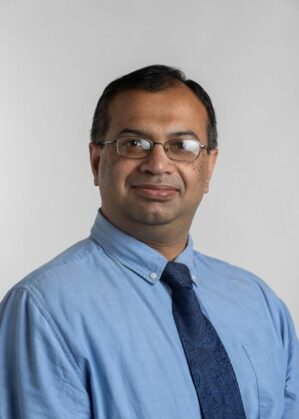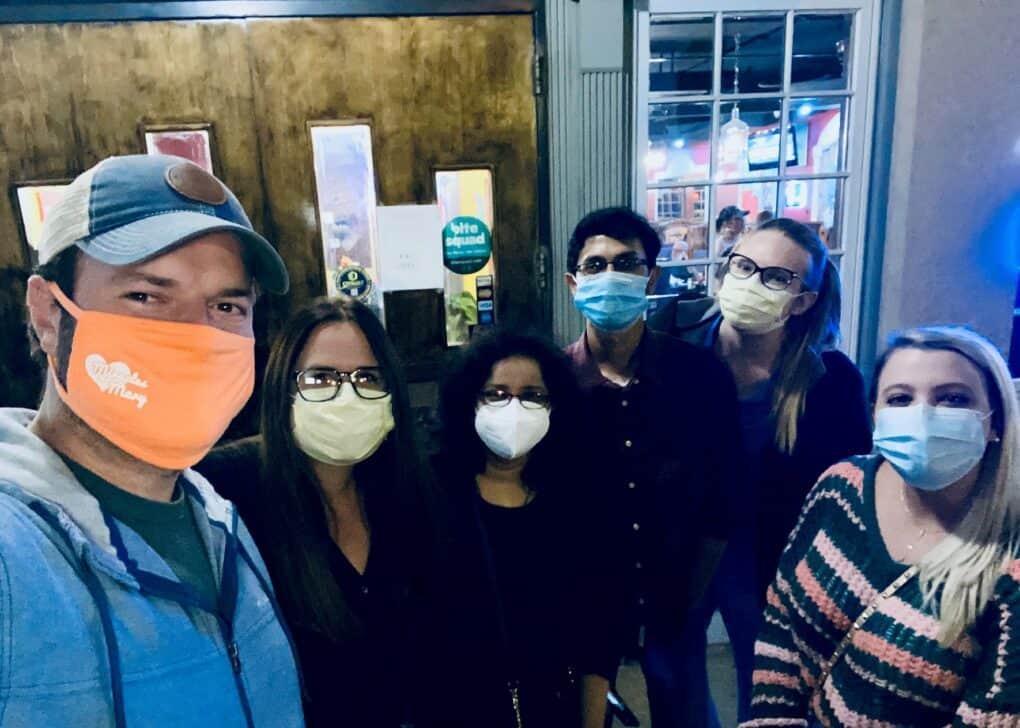Virtual Tour
Child Neurology Residency Program Director’s Message

Thank you for your interest in the Child Neurology Residency Program at the University of Arkansas for Medical Sciences. It a fascinating time to begin a career in child neurology with recent advances in the understanding and treatment of pediatric neurological diseases. I am very proud of the comprehensive training our program provides and I’m excited to share it with you! Our mission is focused on training skilled and compassionate child neurologists and to foster resident’s interest in not only teaching but also in the care of vulnerable patient populations. We accomplish this through our extensive exposure to clinical child neurology at Arkansas Children’s Hospital, the only dedicated pediatric hospital system in the state of Arkansas, as well as a robust educational curriculum lead by multiple board-certified child neurologist with various clinical and research interests.
The UAMS Child Neurology Residency is a three-year ACGME accredited training program that accepts one resident per year with guaranteed acceptance into the UAMS Pediatrics Residency Program for the first two preliminary years. The first year of training is comprised of adult rotations at UAMS where the residents will learn the fundamentals of the neurological examination as well as localization and characterization of neurological disease. The second and third years are dedicated to child neurology with core rotations focused on inpatient and outpatient neurology exposure. During outpatient clinic months, residents will be involved in general neurology clinics as well as subspecialty clinics such as brain tumor, spinal muscular atrophy, spasticity, pediatric demyelinating disorders, tuberous sclerosis and many more. Ample elective time is included throughout the three years of training to help residents focus their individual interests in the various areas of child neurology. During training, residents gain exposure to innovative technology including magnetoencephalography and transcranial magnetic stimulation and work with a comprehensive epilepsy team within a Level 4 Epilepsy Center. In addition, research exposure during training is not only encouraged but fostered through a formal research education curriculum and mentorship.
Beyond the educational curriculum, I am proud of the social connections provided during training within our program. It is not unusual to have trepidation intermixed within the excitement of starting a combined five-year program. We appreciate that residency can be a trying and sometimes difficult time but we can guarantee that it will also be extremely rewarding as you transition from a medical student to a physician. Our residents quickly become part of the child neurology family and we remain committed to fostering a sense of community and compassion during your time in Arkansas. To accomplish this, the program focuses on supporting our residents in all aspects with a strong emphasis on resident wellness and with multiple programs in place to support this.
I am excited to show you more about our program as you review our website. I hope you are able to sense the dedication of our close-knit program to teaching not only the fundamentals of child neurology but in fostering a desire to provide comprehensive care to underserved and vulnerable patient populations. Please do not hesitate to contact me with any questions. I look forward to hearing from you!
Sincerely,
Kapil Arya, M.D.
Director, Child Neurology Residency Program
KArya@uams.edu
Our Mission Statement
The Child Neurology Residency Program at the University of Arkansas for Medical Sciences is dedicated to training highly skilled and compassionate child neurologists and fostering residents’ interest in not only teaching but also in the care of vulnerable patient populations. This is accomplished through extensive exposure to clinical child neurology in the only dedicated pediatric hospital system in the state of Arkansas as well as a robust didactic schedule, led by multiple board-certified child neurologists. Our curriculum over three years provides residents exposure to diverse patient populations with the opportunity to learn common child neurology diagnoses as well as rare and complicated presentations. Centered in a rural state, our mission focuses on extensive resident education and training for underserved and vulnerable patient populations that encourages graduates to practice in underserved areas and exemplify compassion. Through this mission, our residents represent the core values of our sponsoring institution — integrity, respect, diversity, safety and excellence.

Our Program
During the first year of training, residents complete 12 months of adult neurology with six months of inpatient rotations, three months of outpatient rotations and three months of electives. During the final two years of training, the focus is on child neurology training and the curriculum covers both inpatient and outpatient settings with exposure to neonatal, cardiovascular and pediatric intensive care patients. In addition, with elective rotations, residents can focus their education on areas of interest. Through this robust program, our goal is to provide the educational and clinical foundation for successful child neurologists in the evolving field of medicine.
We are committed to education and work-life balance. Our schedules are compliant with the ACGME duty hour regulations and allow our residents the personal time to spend with loved ones and enjoy the great outdoors of Arkansas. We continually stress the importance of well-being to our residents and faculty. Our residents are encouraged to use the UAMS Resident Wellness website, as well as resources at both Arkansas Children’s Hospital and UAMS such as relaxation rooms and wellness events scheduled throughout the year.
Our program has always been and continues to be an equal opportunity residency program. Our program aims to train residents to care for a wide range of patients including underserved and vulnerable populations. It is our belief that to achieve this goal, residency programs must first ensure training opportunities for a diverse population of applicants. This diversity in trainees allows for more robust solutions to the educational process and the ability to bring together people with a variety of beliefs and perspectives. We are committed to take positive efforts to recruit and employ qualified applicants without regard to sex, race, age, religion, color, national origin, disability, veteran status or genetics. These effects continue to align with the UAMS Strategic plans already in place through our organization that emphasizes future inclusive work environment training as well as metrics to assess progress in all areas.
Exceptional Opportunities
Arkansas Children’s Hospital includes 336 beds and offers three intensive care units. The campus spans 36 city blocks and occupies more than 2,000,000 square feet. ACH is the flagship hospital of the only pediatric health system in the state of Arkansas, which has a population of 2.8 million. The hospital also serves patients referred from southern Missouri, eastern Oklahoma, northern Louisiana, and northeast Texas.
ACH is also home to state-of-the-art brain mapping technology called magnetoencephalography. The only one of its kind in the state, the MEG system allows physicians to identify patients who may benefit from epilepsy surgery. It’s also used to evaluate brain activity and conduct mapping before brain tumor surgery. The MEG is safe for both children and adults.
The section of Pediatric Neurology staff provides inpatient and consultation services throughout the busy free-standing children’s hospital, including large and active PICU, CVICU and NICU facilities. A thirteen-bed inpatient video EEG monitoring unit along with long-term bedside EEG and numerous routine EEG’s allows ample opportunity for learning electroencephalography. Arkansas Children’s Comprehensive Epilepsy Program has been certified as a Level 4 Epilepsy Center by the National Association of Epilepsy Centers, providing comprehensive clinical and surgical programs for children with intractable epilepsy and allowing extensive experience in epilepsy management to residents. Additionally, clinical opportunities include multiple subspecialty neurology clinics such as brain tumor, muscular dystrophy, tuberous sclerosis, spasticity, demyelinating and neurometabolic clinics in the Neuroscience Outpatient Center with 35 exam rooms. Other clinical services are uniformly strong and supportive, providing a rich and challenging learning environment. Research opportunities include clinical research as well as the chance to interface with basic scientists at UAMS or in ACH labs.
